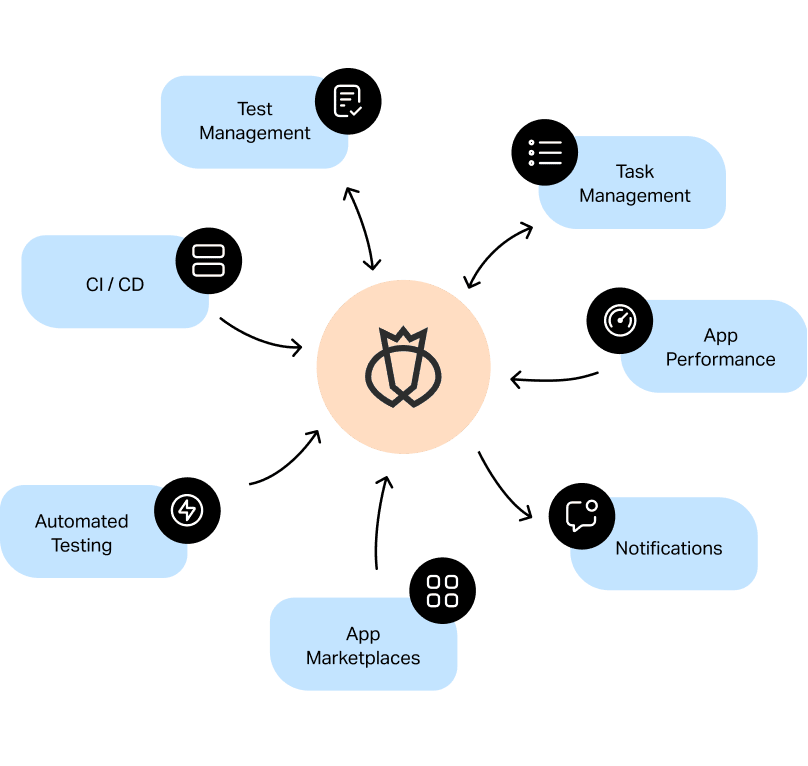Automation Testing Frameworks: Simplifying Complex Testing Scenarios
Automation Testing Frameworks: Simplifying Complex Testing Scenarios
Blog Article
From Guidebook to Automated Testing: A Comprehensive Guide to Transitioning Efficiently and Efficiently
In the world of software testing, the shift from manual to automated processes has actually come to be a progressively important transition for organizations looking for to improve efficiency and accuracy in their screening practices. As modern technology proceeds to advancement, the demand for efficient and smooth computerized testing techniques has actually never been more important. The trip from guidebook to automated testing is not without its obstacles, however when approached strategically and with a clear strategy in mind, the advantages can be considerable - automation testing. In this comprehensive guide, we will explore key steps and considerations crucial for a successful shift, from the initial option of tools to the assimilation of automation into existing process. Stay tuned to reveal the understandings that will assist pave the means for a smoother and a lot more reliable screening process.
Advantages of Automated Evaluating
Automated screening provides countless advantages, improving efficiency and precision in software advancement procedures. One primary benefit is the substantial decrease in testing time. Automated tests can be run simultaneously on several tools and operating systems, significantly accelerating the screening stage compared to hands-on screening. This raised efficiency allows for faster responses on the quality of the software program, making it possible for designers to identify and resolve concerns quickly.
Furthermore, automated testing ensures a greater level of accuracy in finding flaws. Consistency in screening is also improved, as automated tests implement the same actions precisely each time they are run.
Choosing the Right Tools

First of all, analyze your demands and purposes. Recognize the extent of your task, the technologies entailed, and the skill set of your group. This analysis will certainly help you establish the features and capacities you need in your testing tools.
Secondly, take into consideration the compatibility of the tools with your existing systems and processes. Smooth integration with your existing software advancement lifecycle is necessary to make sure a smooth transition to automation.
In addition, examine the scalability and flexibility of the devices. As your testing needs progress, the tools need to have the ability to adapt and suit modifications effectively.
Finally, consider the assistance and neighborhood around the devices. When applying automated testing, durable support and an energetic user neighborhood can offer beneficial resources and help. By carefully considering these elements, you can pick the right tools that line up with your needs and set the stage for an effective transition to automated testing.
Writing Efficient Examination Manuscripts

When crafting examination scripts, it is essential to think about the specific demands of the software being checked and ensure that the manuscripts address all important performances. Clear and detailed naming conventions for examination manuscripts and test situations can boost readability and maintainability. Additionally, integrating mistake handling mechanisms within the examination manuscripts can assist in recognizing and addressing problems without delay.
Additionally, arranging examination manuscripts into modular components can enhance reusability and scalability, lowering redundancy and enhancing effectiveness in examination script maintenance. Routine testimonials and updates to test scripts are critical to equal developing software application needs and functionalities. By following these principles, testers view can produce reliable and durable examination manuscripts that add significantly to the success of automated testing processes.
Integrating Automation Into Workflows
By effortlessly integrating automated screening tools like Selenium or Appium right into the software program growth lifecycle, teams can achieve faster responses on code changes, leading to quicker bug discovery and resolution. This integration permits for continuous screening throughout the growth process, making certain that any concerns are identified early on, resulting in higher software application quality. Proper combination of automation devices requires partnership between advancement, screening, and procedures teams to develop a unified operations that optimizes efficiency and effectiveness in supplying top quality software program items.
Ensuring a Smooth Shift
Successfully transitioning to automated screening includes thorough preparation and careful execution to lessen disturbances and make best use of performance in the software program growth procedure - automation testing. To guarantee a smooth transition, it is vital to start by conducting a thorough analysis of the current testing processes and identifying areas where automation can bring the most significant benefits. Involving with all stakeholders early on at the same time, including developers, testers, and project supervisors, is critical for amassing assistance and buy-in for the automation effort
Communication is crucial during this transition phase. Clear interaction of the objectives, benefits, and expectations of automated screening aids to take care of any type of resistance or issues that may arise. Additionally, giving appropriate training and sources for staff member to upskill in automation devices and methods is essential for making certain an effective shift.

Final Thought
Finally, transitioning from guidebook to automated screening uses many advantages, consisting of increased efficiency and reliability. By selecting the appropriate devices, creating reliable examination manuscripts, and incorporating automation effortlessly into process, organizations can guarantee a smooth and successful transition. It is vital to accept automation as an important asset in software screening procedures to enhance general quality and productivity.
In the world of software program testing, the shift from guidebook to automated procedures has ended up being a significantly essential change for organizations seeking to improve efficiency and precision in their screening practices. Automated examinations can that site be run all at once on several devices and running systems, dramatically speeding up the testing stage compared to manual screening. Consistency in screening is likewise improved, as automated examinations perform the very same steps precisely each time they are run.To make certain the successful execution of chosen screening tools, the creation of reliable test scripts plays an essential function in confirming the performance and efficiency of automated processes - automation testing. By following these concepts, testers can create efficient and robust examination scripts that add considerably to the success of automated screening procedures
Report this page